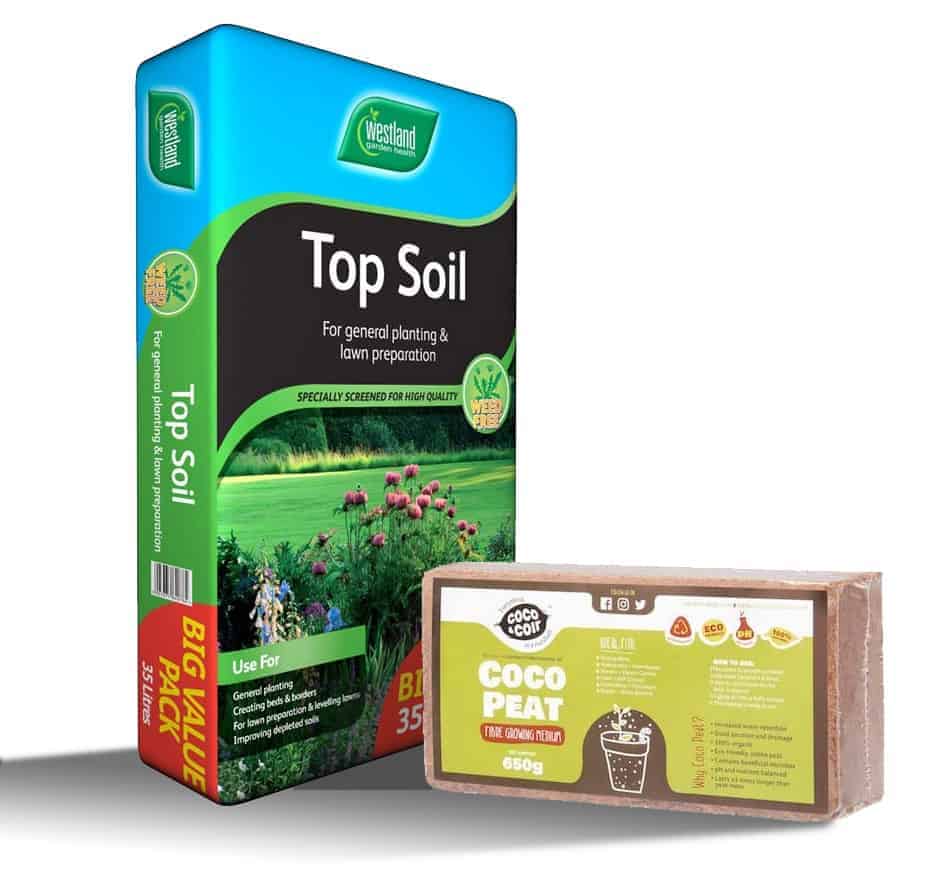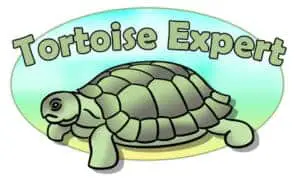
The two most commonly used tortoise substrates are top soil and Coco Coir. These are widely regarded as the most suitable substrates because they are safe and natural products, as well as being readily available, cost effective and simple to keep clean.
Top soil
Top soil is a great substrate for tortoises because it most closely resembles their natural habitat in the wild. Top soil allows a tortoise to dig and burrow, which are behaviours they commonly exhibit in the wild.
The best top soils are those which do not include any added nutrients, fertilisers or compost.
Bags of suitable top soil can be found at most good garden centres or hardware stores. Alternatively, you can use soil from your garden if you can be sure it doesn’t contain added nutrients, fertilisers, compost or any pesticides.
Using Top Soil
To use top soil, simply add it to your tortoises enclosure (either their tortoise table or outdoor enclosure) ensuring it is deep enough for your tortoise to bury itself completely. Dont be too concerned if you find the soil contains natural items like sticks and stones; you’ll be hard pressed to find a natural product like soil that doesn’t come with sticks and stones! If this bothers you then a garden sieve will remove any of these natural items.
Also, don’t be alarmed if your tortoise takes a nibble of the top soil. They will simply be investigating their new substrate. Just ensure you also include appropriate plants, a cuttlefish and some lump chalk in their enclosure and your tortoise should nibble on those instead.
Lightly spray the top soil morning and night to replicate rain and morning dew which encourages a hard crust to form which resembles a tortoises natural environment. This hard crust also makes it easier for a tortoise to right themselves if it topples on to its back.
When the top soil is sprayed, the water also soaks into the soil, keeping the soil lower down moist which in turn provides some humidity which is essential for the health of your tortoise.
Cleaning Top Soil
After 3-4 months woodlice can be added to the top soil as a means of naturally cleaning the soil. The insertion of insects into a tortoises enclosure is often referred to as having a ‘clean up crew’ because these useful bugs feed on your tortoises poo and old decaying food.
These woodlice can be those found in your garden, or they can even be purchased from online retailers along with ‘bug boosting powders’ which can be sprinkled on the top soil to ensure your bugs are working at their very best. The ‘clean up crew’ method means you don’t need to regularly clean your tortoises enclosure (other than a daily spot clean) and it also replicates your tortoises natural environment more closely. Win win!
You may find that mushrooms start to grow in your top soil. This is normal and mushrooms can be removed by simply picking them out. Do make sure you dig them out to ensure you remove any spores. There is no need to remove the top soil itself. Fungi is found in all soils, so the sight of mushrooms growing in your top soil is certainly not something that should concern you.
Adding Other Products to Top Soil
Some people add sand to their top soil but we wouldn’t recommend this due to the fact that not all sands are safe to include in your tortoise enclosure.
Straw is also often used as bedding for tortoises but again we wouldn’t recommend this because straw can hold mould spores which in turn can cause respiratory issues in tortoises. If you want to create a type of bed for your tortoise, then using sphagnum moss is recommended. You should allocate an area near to the heat lamp (but not under it) as your tortoise’s bed, and fill it with the moss. You should remember to spray the moss regularly with water to keep it alive.
Coco Coir
Coco Coir is a substrate made from Coconut Coir fibres which are extracted from the husk of the Coconut. It is also known as Coco Peat and Coco Block.
If you do choose to opt for Coco Coir you need to ensure the Coir you are purchasing is pure Coir so that it is safe for your tortoise. This choice of substrate is 100% natural and organic so if it is ingested by your tortoise it is completely harmless.
Of course, unlike top soil which can be taken from your garden for free, Coco Coir is more costly and it requires some preparation prior to use. Before using the Coco Coir you will need to soak the Coir to get it to soften and fluff up.
Using Coco Coir
Upon purchase you will see that it resembles a hard brick like substance which will require soaking to soften it up. There is the option to purchase pre-soaked Coco Coir, but like anything, this comes at a cost and ultimately depends on how much time you have spare to prepare your tortoise’s enclosure.
As with top soil you need to ensure you put enough Coir into the enclosure to enable the tortoise to dig and burrow. We would recommend a depth of around 3 inches for both Coco Coir and top soil to be sufficient.
A great benefit to Coco Coir is that it naturally increases the humidity of the tortoises enclosure. As with top soil, you can also lightly spray the Coir to increase humidity should you wish to do so. One criticism or Coco Coir is that it dries out very quickly and as a result can get dusty which in turn can lead to respiratory issues in tortoises. To avoid this problem spraying the Coir with water on a daily basis is highly recommended to ensure it stays moist.
Coco Coir is also odour free and loose which provides tortoises with an opportunity to burrow and dig which is beneficial for tortoise enrichment.
Cleaning Coco Coir
Coco Coir should be spot cleaned daily but changed completely every 2-3 weeks or when heavily soiled. Alternative, if you have the time, you can remove the Coco Coir every four weeks and pour boiling water over it to sterilise it and keep it lasting longer. If this is done every four weeks the Coir can last up to six months.
As with top soil you may notice mushrooms growing in your Coir. Again, when these are seen they simply need to be removed whilst ensuring you remove any spores from the enclosure at the same time.
Coco Coir can also be added to top soil should you wish to include a mixture of substrates for your tortoise. Providing a mix of substrates not only enhances your tortoises enrichment but also replicates your tortoises natural environment.
Final Thoughts
Whichever substrate you choose to use for your tortoise, remember that tortoises can be stubborn creatures and react adversely to change. If your tortoise doesn’t appear happy with their new substrate then hang in there for at least six weeks before making any further changes. Some tortoises may initially move or eat less if their environment is changed but after a few weeks they should revert back to their usual active selves.

